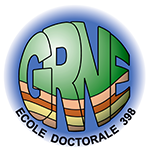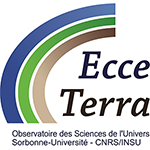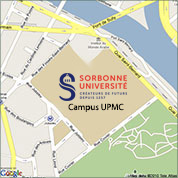Séminaire ISTeP - Irene Molinari
(INGV, Roma)
Improving the knowledge of the 3D Italian and Alpine crustal structure: from seismic noise tomography to exploration data.
Detailed maps of the seismic structure of the crust are valuable because they reflect the near-surface effects of past and present tectonic processes, and are an essential requirement to image mantle structure, to constrain the parameters that define seismic events, to model seismic wave propagation and to estimate seismic shaking. Seismic observations are very sensitive to crustal structure, but are often insufficient to image it unambiguously.
We exploit two different methods to improve the knowledge of the crust at regional and local scale. We use ambient noise cross correlation measurements to infer the crustal structure under Italy and central Europe. First, we invert the high resolution database of Verbeke et al. [2012], to find phase-velocity maps of Rayleigh wave fundamental modes from 7 to 37 seconds. We next apply a direct-search method to obtain the shear velocity structure under the region of interest. Crustal discontinuity depths are estimated based on receiver function analysis.
The reconstructed model shows the low velocity area beneath the Po Plain; the contrast between the low-velocity crust of the Adriatic domain and the high-velocity crust of the Tyrrhenian domain is clearly seen, as well as an almost uniform crystalline crust beneath the Alpine belt.
We then focus our attention on the Po Plain sedimentary basin, a thick sedimentary basin in an interesting tectonic setting (compressional environment, earthquakes). We build up a 3D local velocity model based on exploration and geological dataset merging the abundant informations existing in the form of borehole data and seismic reflection profiles that had been shot in the '70s and the '80s for hydrocarbon exploration.
We use the model to simulate 3D seismic shaking scenarios for past and possible sources tied to devastating historical earthquakes that are known to have occurred in North Italy causing strong documented effects in a radius of hundreds kilometers.
23/05/2014 à 12h30, Salle Fourcade (Tour 55-56, 4ème étage)
Egalement dans la rubrique
Chiffres clés (Mars 2025)
L'ISTeP comprend 131 membres dont :
Permanents (66)
- Professeurs : 17 (+2 PAST)
- Maîtres de conférence : 26
- Directeurs de recherche CNRS : 1
- Chargés de recherche CNRS : 1
- ITA : 19
Personnels non permanents (65)
- Collaborateurs bénévoles / émérites : 17
- Chaire de professeur junior : 1
- Enseignants-chercheurs contractuel : 2
- 1 MCF accueil en délégation
- ATER et Post-Docs : 9
- Doctorants : 32
- ITA-BIATSS : 3





